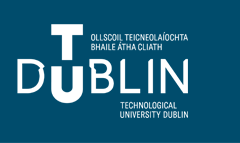Document Type
Report
Disciplines
2. ENGINEERING AND TECHNOLOGY, 2.1 CIVIL ENGINEERING
Abstract
The construction industry is the world’s largest consumer of resources and is responsible for approximately 40% of global carbon emissions. In EU countries, building infrastructure plays a more significant role in energy consumption (40%) and energy-related Green House Gas (GHG) emissions (36%) (European Union, 2024) and for Ireland, the total GHG emissions of the built environment are estimated at 23 MtCO2eq/yr based on the 2018 level, which accounts for approximately 37% of national emissions, comprising 23% from building operations and 14% from embodied carbon (EC) emissions (O’Hegarty and Kinnane, 2022). These current emissions levels are stark given Ireland’s current commitment to half our GHG emissions by 2030 compared to 2018 levels and reach net-zero by 2050 (Government of Ireland: Department of Environment, 2024) however, the digitalisation of the industry is a significant opportunity to increase productivity to meet housing demands while also reducing our emissions through a number of mechanisms. In this context, this report aims to highlight the opportunities for increased sustainability and circular economy principles that can be incorporated into the construction industry and the role of digital technologies in stimulating the transformation of the construction industry in its drive to be more sustainable and circular. The main objective of the report will focus on the opportunities to incorporate circular economy principles into construction and elaborate on a series of resources which are available for interested stakeholders. The report particularly focuses on the opportunities aligned with the increasing digitalisation of the industry and how such tools can be used to not only increase productivity but also increase circularity within the industry. The report also highlights the current barriers and constraints that may still need to be addressed, with reference to the most recent academy studies and industry case studies which are actively addressing such barriers.
DOI
https://doi.org/10.21427/q5g4-g281
Recommended Citation
Fahy, Jimmy and O'Ceallaigh, Conan, "Digitalisation for a Circular Economy (DiCE)" (2024). Reports. 8.
https://arrow.tudublin.ie/builddigitalrep/8
Funder
Department of Public Expenditure, NDP Delivery and Reform
Creative Commons License

This work is licensed under a Creative Commons Attribution-NonCommercial-Share Alike 4.0 International License.
Included in
Architectural Engineering Commons, Architectural Technology Commons, Construction Engineering Commons



Publication Details
This report was produced under Project Ireland 2040 and the work of the CSG Innovation and Digital Adoption Sub-Group.
doi:10.21427/q5g4-g281